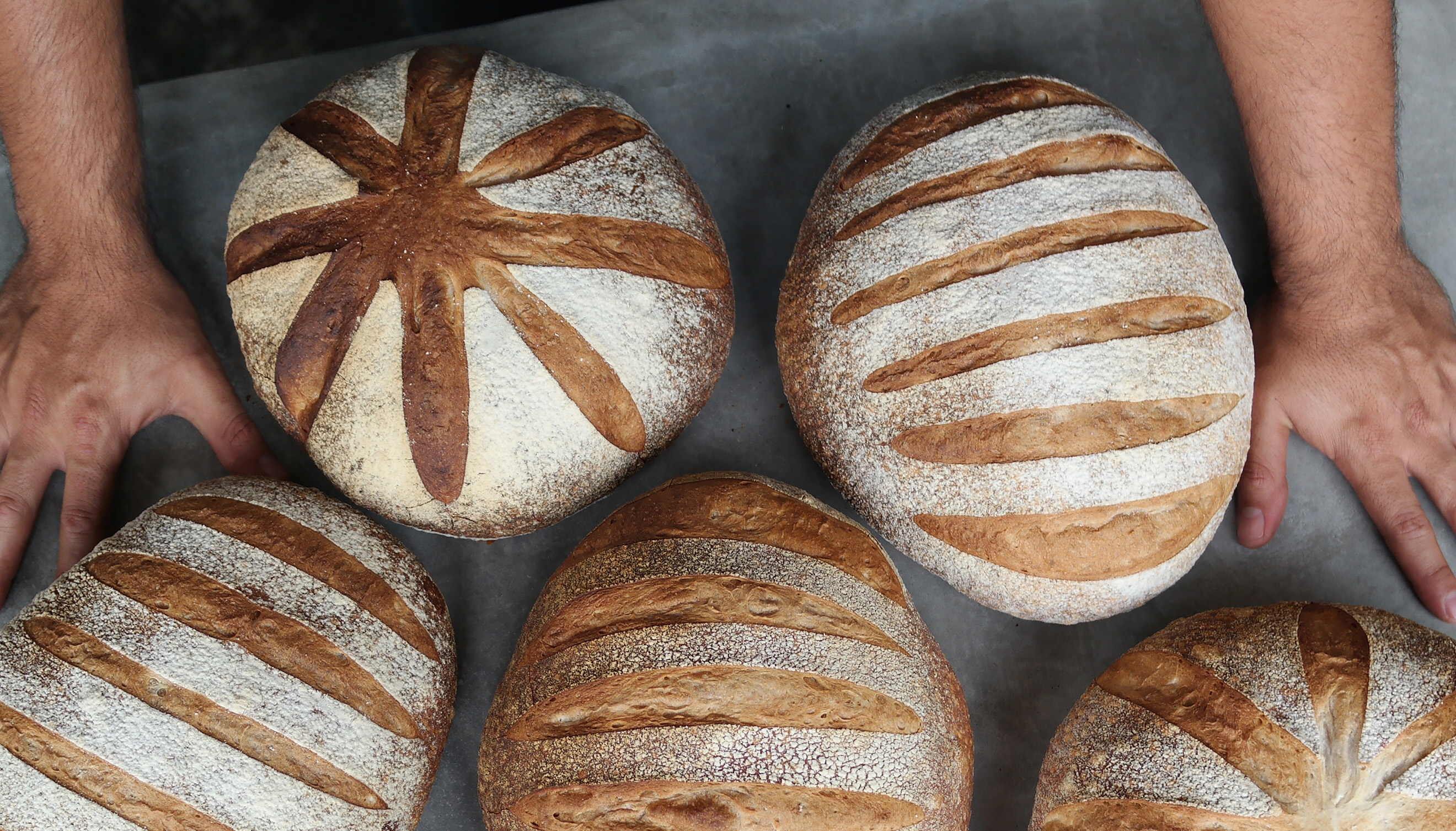
"Pan Comido"
"In the case of the indigenous space, the corn fills the center of the belief. It’s the symbol of the race, what identifies the group and what defines it as an ethnic unit and a cultural universe.
"In the case of the indigenous space, the corn fills the center of the belief. It’s the symbol of the race, what identifies the group and what defines it as an ethnic unit and a cultural universe. In the case of the Ladinos, these mythical values are denied, and it’s reduced to an object with a merely commercial value, out of social-symbolic value, with an inclusive aim." Miguel Ángel Asturias (1992). Hombres de Maíz.
The alimentation has been a fundamental truth since primitive societies. Most of the social rituals made their way into the sociological organization thanks to the intake or the manufacture of a certain product. Such is the case of grain, being a geographically related outcome that determined much of the cultural structure. So we’ve seen the origins of wheat in Europe, rice in Asia and corn in America.
Latin America has always been a proud producer of corn-related products, disposing the cultural insight around the grain, its economical significance and its symbolism. The Tortilla from México, Pupusa from El Salvador, Arepas from Colombia, Empanadas and Cachapas from Venezuela, the Mazamorra Morada from Peru and the Pirco de Choclo from Chile, are only the most iconic examples of the traditional gastronomy, which changed and nourished from the contact with the European wheat.
Many chroniclers place the arrival of wheat to America between 1520 (Mexico) and 1535 (Peru), according only to disperse documents. The most accurate facts relate regular shipments of American wheat to Spain at the end of the 16th century. What happened in the cultural settlements was way more interesting: the indigenous people learned new crop and processing techniques, even though both cereals – corn and wheat – needed similar previous practices like shattering, milling, fermentation and cooking; they acquired knowledge on the manufacture of mills, ovens and yeasts, and their diet change forever.
Nowadays, the bread is a regular meal in Latino America as part of the fundamental production and intake, being Peru and Chile their main consumers. But what happens when a country falls into an economical crisis and the nutrition is being threatened? How does a population cope with the shortage of food and basic products?
This is Venezuela’s reality. An oil producer country that was once called the Saudi Arabia of America that now faces the most terrible economical and social crisis in their history.
Deep within this circumstance, the entrepreneur spirit of the Latino appeared from its profound roots and a couple decided to stand and make a difference, feeding their neighbors during the Guarimbas in February 2014 when Mérida (Venezuela) was being sieged, and using the ritual of cooking bread as a therapy during convulse days.
Viviana Moreno and Juan Pablo Marquez is a creative pair; an industrial designer and an electric engineer who managed to create a product that could socially relate to their personal circumstances and that represented the cultural and idiosyncratic nucleus where they came from.
“I was stressed-out and unemployed so I decided to start baking bread at home”. Says Juan Pablo while he packages an order of hamburger bread. “We ran into an automatic bread maker around 2010, and we thought it was cool. But if a machine could do it, why couldn’t I?” While they were working at the University and trying to obtain a master’s degree, baking bread started as a curiosity, combined with the assiduity to bread in Moreno’s dinner table.
Marquez considers cooking as one of the most scientific processes, where the modification of a single variable can obtain different products and such terms makes it easier for him to relate his scientist side. At the same time he doesn’t thinks of himself as a chef, at any point, awarding the success of such an enterprise to his workmate.
[node:field_slideshow]
Pan Comido began as a homemade project with one oven and as a self-taught exercise. But when questioning the origins of bread culture in such a small town, the answer came immediately through the Portuguese immigration and the assimilation of the European bread in the local traditions, although Viviana remembers how her grandmother used to make her own prototype of bread in a small village inside the Venezuelan Andes, using panela as an additive.
The commercial evolution was interesting as well: the bakery transformed itself from the traditional cellar in the small colonial towns to small supermarkets that started providing different types of bread, jam, cheese, custard and all the ingredients that could be shared as well with arepas, tortillas and cachapas, undermining the specificity of the art of baking. This way, the appreciation of the wide range of bread was almost extinct, transforming itself into a challenge for entrepreneurs that wanted to reach a wider market.
“We dedicated ourselves to produce different types of bread, respecting all the processes and being fussy with the structure. We wanted to differentiate ourselves from the common bakery, from the outdated and comfortable production that has mined the Venezuelan market”. Pan Comido decided to meddle into the supply and demand system, offering a more traditional perspective in the bread culture.
What’s more remarkable from these young Venezuelans it’s the fact that they’re pioneers in the production of bread from mother mass (sourdough), being one of the few brands that decided to dabble in it, earning national recognition for a product which origin was fortuitous.
In a moment of chaos, of one of the highest rates of violence in the world, Venezuela is the worst scenario for any industry, even so for any forward-looking initiative. But in the middle of the disaster this couple managed to propel a unique idea. They invested the few bucks they had left into a flour sack, and began baking for their neighbors without charging a single dime, being loyal to the commune spirit that reined in a moment of such despair.
“After a while, our neighbors insisted in giving us something back, our close friends where always visiting us to try our bread and we used to gather around a group of creative colleagues to brainstorm in the middle of the crisis. That’s how we designed our brand”.
Following several attempts – with Swedish and white bread – their first real order was of hot dog bread. Nowadays they manage more than three times their original production, with a deep marketing analysis and a packaging that has become an icon; their ovens are an in-house production and Pan Comido became a national brand in a country where even the oil is being imported.
Latin Americans are known for their hard work and their capacity to adapt themselves to new and difficult situations. Venezuelans are a fresh example of such a character and this kind of enterprises are rising simultaneously all over the world. Take a look at Patricia Phelps de Cisneros, Empresas Polar and the Santa Teresa crew, without overlooking the small enterprises that keep rising in the United States like Caracas Arepa Bar in New York, considering that the rate of Venezuelan immigration raised a 135% in the last 14 years.
Pan Comido is a brilliant example of hard work, professionalism and an evidence of the success of transculturalism in Latin America; they have become a product of the metamorphosis of Latin idiosyncrasy into the best compilation of our spirit.
Take a look at their work, follow and support!










LEAVE A COMMENT:
Join the discussion! Leave a comment.